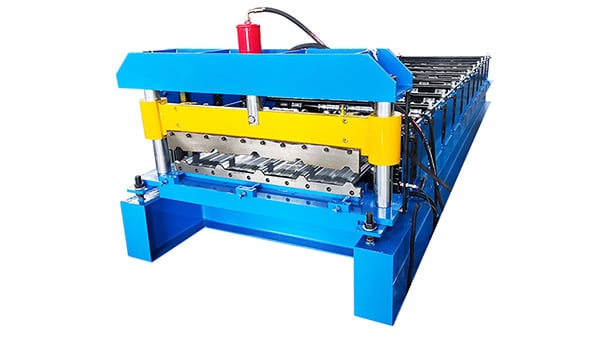The Versatile Materials Utilized in Roll Forming
Roll forming is a highly efficient and cost-effective metal fabrication process used to create complex shapes and profiles. It involves feeding a continuous strip of metal through a series of rollers to gradually form the desired shape. This versatile manufacturing method finds application in various industries, including automotive, construction, and appliance manufacturing. But what materials are commonly used for roll forming? Let's explore the key materials that can be used in this process.
Steel: The Most Widely Used Material in Roll Forming
Steel is the primary material used in roll forming due to its exceptional strength, durability, and affordability. There are different types of steel that can be utilized, including carbon steel, stainless steel, and galvanized steel. Carbon steel is the most common choice, offering high strength and formability. Stainless steel is preferred when corrosion resistance is required, while galvanized steel provides excellent protection against rust.
Aluminum: Lightweight and Versatile
Aluminum is another popular material used in roll forming. It is known for its lightweight properties, making it an excellent choice for applications where weight reduction is critical. Additionally, aluminum offers good corrosion resistance and is highly versatile, allowing for the creation of intricate profiles and shapes. It is commonly used in the automotive industry, aerospace sector, and construction applications.
Copper: A Premium Material with Excellent Conductivity
Copper is a premium material used for roll forming, known for its exceptional electrical conductivity and thermal properties. It is frequently chosen for applications that require high conductivity, such as electrical components and heat exchangers. Copper's unique aesthetic appeal also makes it a popular choice for architectural applications, providing a distinctive and timeless look.
Brass: A Combination of Elegance and Durability
Brass, an alloy of copper and zinc, offers a unique combination of elegance and durability. It is often chosen for decorative applications, including trim, handrails, and architectural features. Brass roll forming provides excellent corrosion resistance, making it suitable for both indoor and outdoor use. The material's malleability allows for the creation of intricate and detailed profiles.
High-Strength Alloys: Meeting Demanding Requirements
For applications that demand exceptional strength and performance, high-strength alloys are commonly used in roll forming. These alloys, such as titanium and nickel alloys, offer superior mechanical properties, high temperature resistance, and excellent corrosion resistance. They find application in industries like aerospace, defense, and power generation, where extreme conditions are encountered.
Plastics: A Lightweight Alternative
Although roll forming is primarily associated with metal materials, certain plastics can also be used in the process. Plastics such as PVC, polycarbonate, and polypropylene offer advantages like lightweight, corrosion resistance, and excellent electrical insulation properties. Plastic roll forming finds application in industries such as automotive, signage, and construction.
Other Materials for Specialized Applications
In addition to the aforementioned materials, roll forming can also be performed with various other materials based on specific application requirements. These materials include but are not limited to titanium, zinc, tin, and various alloys. Each material offers unique characteristics and properties that make them suitable for specific industries and applications.
Considerations for Material Selection in Roll Forming
When selecting the material for roll forming, several factors need to be considered. These include the required mechanical properties, desired aesthetics, corrosion resistance, weight, cost, and the specific application requirements. Collaborating with experienced roll formers and material experts can help in making informed decisions regarding material selection for successful roll forming projects.
Conclusion
Roll forming is a versatile metal fabrication process that can be applied to various materials. Steel is the most commonly used material due to its strength and affordability, while aluminum is favored for its lightweight properties. Copper, brass, and high-strength alloys find application in specialized industries, and plastics offer a lightweight alternative. By carefully considering the specific requirements of the application, the appropriate material can be selected to achieve optimal results in roll forming projects.

